Product Overview
Nicotinamide Adenine Dinucleotide (NAD+) is a universal cellular electron transporter, coenzyme, and signaling molecule present in all cells of the body and is essential for cell function and viability.[1][2] Along with NAD+, its reduced (NADH) and phosphorylated forms (NADP+ and NADPH) are also important.[1][2] NAD+ and its redox partner NADH are vital for energy (ATP) production in all parts of cellular respiration: glycolysis in the cytoplasm and the Krebs cycle and electron transport chain in the mitochondria.
NADP+ and NADPH tend to be used in anabolic reactions, including biosynthesis of cholesterol and nucleic acids, elongation of fatty acids, and regeneration of glutathione, a key antioxidant in the body.[3] In other cellular processes, NAD+ and its other forms are used as substrates by NAD+-dependent/-consuming enzymes to make post-translational modifications to proteins.[1][2] NAD+ also serves as a precursor for the secondary messenger molecule cyclic ADP ribose, which is important for calcium signaling.[4]
NAD+ is naturally synthesized de novo in the body from the amino acid tryptophan or vitamin precursors, nicotinic acid and nicotinamide, collectively known as vitamin B3 or niacin; it can also be synthesized from biosynthetic intermediates, including nicotinamide mononucleotide and nicotinamide riboside.[2][3] Within salvage pathways, NAD+ is continuously recycled within cells being interconverted to and from its other forms.[3] Cell culture studies also suggest that mammalian cells can take up extracellular NAD+.[5]
NAD+ levels are highest in newborns and steadily decline with increasing chronological age.[6] After age 50, they are approximately half of the levels seen in younger adults.[6] The question of why NAD+ levels decline with age has been investigated in model organisms.[7][8] During redox reactions NAD+ and NADH are not consumed but continuously recycled; however, during other metabolic processes, NAD+ is consumed by NAD+-dependent enzymes and thus could become depleted over time, contributing to increased DNA damage, age-related conditions and diseases, and mitochondrial dysfunction.[2][6] Age-related decline in mitochondrial health and function is prominent in theories of aging and senescence, and studies of NAD+ depletion and subsequent oxidative damage and stress support these ideas.[1][2]
A 2016 study in mice, which present age-related declines in NAD+ levels similar to those observed in humans, revealed that the age-related decline in NAD+ levels is driven by increasing levels of CD38, a membrane-bound NADase that breaks down both NAD+ and its precursor nicotinamide mononucleotide.[7] The study also confirmed elevated CD38 gene expression in human adipose tissue from older adults (mean age, 61 years) relative to younger adults (mean age, 34 years).[7] However, other studies in mice have demonstrated that inflammation and oxidative stress caused by aging reduce NAD+ biosynthesis.[8] Thus, it is likely that a combination of mechanisms contribute to age-related decline of NAD+ in humans.
The clinical importance of maintaining NAD+ levels was established in the early 1900s, when it was discovered that the disease pellagra, which is characterized by diarrhea, dermatitis, dementia, and death, could be cured with foods containing NAD+ precursors, in particular vitamin B3.[9] Notably, in contrast to vitamin B3 (niacin) supplementation, which causes the skin to flush, this side effect has not been observed with NAD+ injection.[10] In recent years, low NAD+ levels have been linked to a number of age-related conditions and illnesses associated with increased oxidative/free radical damage, including diabetes, heart disease, vascular dysfunction, ischemic brain injury, Alzheimer’s disease, and vision loss.[8][11][12][13][14][15][16][17]
IV infusion of NAD+ has been used extensively for the treatment of addiction, stemming from a study a 1961 report by Paul O’Hollaren, MD, of Shadel Hospital in Seattle, Washington.[18][19][20] Dr. O’Hollaren described the successful use of IV-infused NAD+ for the prevention, alleviation, or treatment of acute and chronic symptoms of addiction to a variety of substances, including alcohol, heroin, opium extract, morphine, dihydromorphine, meperidine, codeine, cocaine, amphetamines, barbiturates, and tranquilizers, in over 100 cases.[18] However, no clinical trials to date have evaluated the safety and efficacy of NAD+ treatment in addiction.
NAD+-replacement therapy may promote mitochondrial health and homeostasis, genome stability, neuroprotection, healthy aging, and longevity and may aid in treating addiction.[1][2][3][20] Clinical trials evaluating these effects in humans treated with NAD+ injection have not yet been published; however, numerous clinical trials evaluating the efficacy and safety of NAD+-replacement therapy or augmentation in the context of human disease and aging have recently been completed, and many others are ongoing.
The exact mechanisms of NAD+ restoration or augmentation for potential health benefits, such as supporting healthy aging and treating age-related conditions, metabolic and mitochondrial diseases, and addiction, are unknown.[1][2][3][20]
NAD+ replacement may counterbalance age-related degradation of NAD+ and its precursor nicotinamide mononucleotide by NADases, in particular CD38, thereby preventing mitochondrial dysfunction and maintaining metabolic function/energy (ATP) production.[7] However, studies in animal models and humans (and/or samples and cell lines) indicate that NAD+ replacement supports several other biological pathways via NAD+-dependent enzymes.[1][2][3][20]
There are several notable NAD+-dependent enzymes. Poly-ADP ribose polymerases (PARP 1-17) control DNA repair and nuclear stability.[1][3] CD38 and CD157 are NADases whose products (cADP-ribose, ADP-ribose and nicotinic acid adenine dinucleotide) are used in Ca2+ signaling and intercellular immune communication.[1][3] Sirtuins (Sirt 1-7) are a family of histone deacetylases that regulate of several proteins associated with cellular metabolism, cellular stress responses, circadian rhythms, and endocrine functions; Sirts have also been linked to longevity in model organisms and protective effects in cardiac and neuronal models.[1][3] Sterile Alpha and Toll/Interleukin-1 Receptor motif-containing 1 (SARM1), is a recently discovered NAD+ hydrolase involved in neuronal degeneration and regeneration.[21][22]
Some insight into the mechanism of action of NAD+ replacement has been obtained from studies of progeroid (premature aging) syndromes, which mimic the clinical and molecular features of aging. Werner syndrome (WS) is believed to most closely resemble natural aging and is characterized by extensive metabolic dysfunction, dyslipidemia, premature atherosclerosis, and insulin-resistant diabetes.[23] WS is caused by mutations in the gene encoding the Werner (WRN) DNA helicase, which regulates transcription of a key NAD+ biosynthetic enzyme called nicotinamide nucleotide adenylyltransferase 1.[24][25]
A 2019 study found that NAD+ depletion is a major driver of the metabolic dysfunction in WS through dysregulation of mitochondrial homeostasis.[25] Cells with depleted NAD+ from samples of WS patients and WS animal models showed impaired mitophagy (selective degradation of defective mitochondria).[25] NAD+ repletion restored NAD+ metabolic profiles, improved fat metabolism, reduced mitochondrial oxidative stress, and improved mitochondrial quality by restoring normal mitophagy in human cells with mutated WRN.[25] In animal models, NAD+ repletion significantly extended lifespan and delayed accelerated aging, including increased numbers of proliferating stem cells in the germ line.[25] Replacement of NAD+ by administering various NAD+ precursor molecules recapitulated the results, confirming that the beneficial effects are due to NAD+ repletion.[25]
Providing additional support for the role of NAD+ in promoting mitochondrial and metabolic health, murine cells overexpressing the NADase CD38 consumed less oxygen, had increased lactate levels, and possessed irregular mitochondria, including features such as lost or swollen cristae.[7] Isolated mitochondria from these cells showed severe loss of NAD+ and NADH compared to controls. In mice lacking CD38, NAD+ levels, mitochondrial respiratory rates, and metabolic functions were preserved during aging.[7]
At the time of writing, there were no other reported contraindications/precautions for NAD+ injection. Individuals with known allergy to NAD+ injection should not use this product.
NAD+ injection appears to be safe and well tolerated.[10] Adverse reactions and side effects of NAD+ injection may include but are not limited to headache, shortness of breath, constipation, increased plasma bilirubin, and decreased levels of gamma glutamyl transferase, lactate dehydrogenase, and aspartate aminotransferase.[10][18]
Case reports of the use of NAD+ for treatment of drug addiction provided preliminary details on adverse reactions and safety.[18][19] A 1961 report described “no distress” in patients with addiction who received NAD+ using a slow IV drip rate (no more than 35 drops per minute); with a faster drip rate, patients reported headache and shortness of breath.[18] In this report, the dosage was 500 - 1000 mg daily for 4 days followed by injections twice weekly for one month and a maintenance dose of one injection twice monthly. In one of the two cases, the patient reported constipation while on treatment.[18]
In a 2019 study, the safety of IV infusion of NAD+ was assessed in a cohort of healthy male participants (n=11; NAD+ n = 8 and Control n = 3) aged 30-55 years using liver function tests (serum, total bilirubin, alkaline phosphatase, alanine aminotransferase, gamma glutamyl transferase, lactate dehydrogenase, and aspartate aminotransferase) and clinical observation of any adverse events.[10] No adverse events were observed during the 6 hours infusion in either the NAD+ or placebo (saline) cohorts.[10] In the NAD+ group, significant decreases in liver function enzymes (gamma glutamyl transferase, lactate dehydrogenase, and aspartate aminotransferase) and a significant increase in plasma bilirubin were observed at 8 hours after initiation of the NAD+ infusion.[10] However, the changes were not considered clinically significant. The authors acknowledge the small sample sizes, especially for the control group; therefore, these results should be interpreted with caution.[10]
The safety of NAD+ injection has not been evaluated in pregnant women. Due to this lack of safety data, pregnant women should avoid NAD+ injection.
The safety of NAD+ injection has not been evaluated in women who are breastfeeding or children. Due to this lack of safety data, women who are breastfeeding and children should avoid NAD+ injection.
Store this medication in a refrigerator between 36°F to 46°F (2°C – 8°C). Do not freeze. Protect from light. Keep all medicine out of the reach of children. Throw away any medicine after the beyond use date. Do not flush unused medications or pour down a sink or drain.
- Cantó C, Menzies KJ, Auwerx J. NAD+ Metabolism and the Control of Energy Homeostasis: A Balancing Act between Mitochondria and the Nucleus. Cell Metab. 2015;22(1):31-53. doi:10.1016/j.cmet.2015.05.023
- Johnson S, Imai SI. NAD+ biosynthesis, aging, and disease. F1000Research. 2018;7. doi:10.12688/f1000research.12120.1
- Belenky P, Bogan KL, Brenner C. NAD+ metabolism in health and disease. Trends Biochem Sci. 2007;32(1):12-19. doi:10.1016/j.tibs.2006.11.006
- Guse AH. The Ca2+-Mobilizing Second Messenger Cyclic ADP-Ribose. In: Calcium: The Molecular Basis of Calcium Action in Biology and Medicine. Springer Netherlands; 2000:109-128. doi:10.1007/978-94-010-0688-0_7
- Billington RA, Travelli C, Ercolano E, et al. Characterization of NAD uptake in mammalian cells. J Biol Chem. 2008;283(10):6367-6374. doi:10.1074/jbc.M706204200
- Massudi H, Grant R, Braidy N, Guest J, Farnsworth B, Guillemin GJ. Age-Associated Changes In Oxidative Stress and NAD+ Metabolism In Human Tissue. Polymenis M, ed. PLoS One. 2012;7(7):e42357. doi:10.1371/journal.pone.0042357
- Camacho-Pereira J, Tarragó MG, Chini CCS, et al. CD38 Dictates Age-Related NAD Decline and Mitochondrial Dysfunction through an SIRT3-Dependent Mechanism. Cell Metab. 2016;23(6):1127-1139. doi:10.1016/j.cmet.2016.05.006
- Yoshino J, Mills KF, Yoon MJ, Imai SI. Nicotinamide mononucleotide, a key NAD + intermediate, treats the pathophysiology of diet- and age-induced diabetes in mice. Cell Metab. 2011;14(4):528-536. doi:10.1016/j.cmet.2011.08.014
- Goldberger J. Public Health Reports, June 26, 1914. The etiology of pellagra. The significance of certain epidemiological observations with respect thereto. Public Health Rep. 1975;90(4):373-375. https://www.ncbi.nlm.nih.gov/pmc/articles/PMC1437745/ Accessed October 11, 2020.
- Grant R, Berg J, Mestayer R, et al. A Pilot Study Investigating Changes in the Human Plasma and Urine NAD+ Metabolome During a 6 Hour Intravenous Infusion of NAD+. Front Aging Neurosci. 2019;11. doi:10.3389/fnagi.2019.00257
- Wu J, Jin Z, Zheng H, Yan LJ. Sources and implications of NADH/NAD+ redox imbalance in diabetes and its complications. Diabetes, Metab Syndr Obes Targets Ther. 2016;9:145-153. doi:10.2147/DMSO.S106087
- Pillai JB, Isbatan A, Imai SI, Gupta MP. Poly(ADP-ribose) polymerase-1-dependent cardiac myocyte cell death during heart failure is mediated by NAD+ depletion and reduced Sir2α deacetylase activity. J Biol Chem. 2005;280(52):43121-43130. doi:10.1074/jbc.M506162200
- Csiszar A, Tarantini S, Yabluchanskiy A, et al. Role of endothelial NAD+ deficiency in age-related vascular dysfunction. Am J Physiol – Hear Circ Physiol. 2019;316(6):H1253-H1266. doi:10.1152/ajpheart.00039.2019
- Ying W, Xiong Z-G. Oxidative Stress and NAD+ in Ischemic Brain Injury: Current Advances and Future Perspectives. Curr Med Chem. 2010;17(20):2152-2158. doi:10.2174/092986710791299911
- Zhu X, Su B, Wang X, Smith MA, Perry G. Causes of oxidative stress in Alzheimer disease. Cell Mol Life Sci. 2007;64(17):2202-2210. doi:10.1007/s00018-007-7218-4
- Abeti R, Duchen MR. Activation of PARP by oxidative stress induced by β-amyloid: Implications for Alzheimer’s disease. Neurochem Res. 2012;37(11):2589-2596. doi:10.1007/s11064-012-0895-x
- Lin JB, Apte RS. NAD + and sirtuins in retinal degenerative diseases: A look at future therapies. Prog Retin Eye Res. 2018;67:118-129. doi:10.1016/j.preteyeres.2018.06.002
- O’Hollaren P. Diphosphopyridine nucleotide in the prevention, diagnosis and treatment of drug addiction. West J Surg Obstet Gynecol. May 1961.
- Mestayer PN. Addiction: The Dark Night of the Soul/ Nad+: The Light of Hope – Paula Norris Mestayer – Google Books. Balboa Press; 2019. https://books.google.com/books?id=t7qEDwAAQBAJ&lr=&source=gbs_navlinks_s Accessed October 11, 2020.
- Braidy N, Villalva MD, van Eeden S. Sobriety and satiety: Is NAD+ the answer? Antioxidants. 2020;9(5). doi:10.3390/antiox9050425
- Gerdts J, Brace EJ, Sasaki Y, DiAntonio A, Milbrandt J. SARM1 activation triggers axon degeneration locally via NAD+ destruction. Science (80- ). 2015;348(6233):453-457. doi:10.1126/science.1258366
- Essuman K, Summers DW, Sasaki Y, Mao X, DiAntonio A, Milbrandt J. The SARM1 Toll/Interleukin-1 Receptor Domain Possesses Intrinsic NAD+ Cleavage Activity that Promotes Pathological Axonal Degeneration. Neuron. 2017;93(6):1334-1343.e5. doi:10.1016/j.neuron.2017.02.022
- Oshima J, Sidorova JM, Jr. Monnat RJ. Werner syndrome: Clinical features, pathogenesis and potential therapeutic interventions. Ageing Res Rev. 2017;33:105-114.
- Yu CE, Oshima J, Fu YH, et al. Positional cloning of the Werner’s syndrome gene. Science (80- ). 1996;272(5259):258-262. doi:10.1126/science.272.5259.258
- Fang EF, Hou Y, Lautrup S, et al. NAD+ augmentation restores mitophagy and limits accelerated aging in Werner syndrome. Nat Commun. 2019;10(1):1-18. doi:10.1038/s41467-019-13172-
Administration Instructions
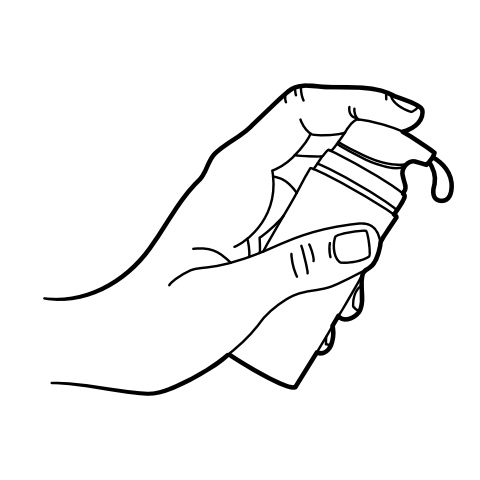
Pump Instructions
503A vs 503B
- 503A pharmacies compound products for specific patients whose prescriptions are sent by their healthcare provider.
- 503B outsourcing facilities compound products on a larger scale (bulk amounts) for healthcare providers to have on hand and administer to patients in their offices.
Frequently asked questions
Our team of experts has the answers you're looking for.
A clinical pharmacist cannot recommend a specific doctor. Because we are licensed in all 50 states*, we can accept prescriptions from many licensed prescribers if the prescription is written within their scope of practice and with a valid patient-practitioner relationship.
*Licensing is subject to change.
Each injectable IV product will have the osmolarity listed on the label located on the vial.

Given the vastness and uniqueness of individualized compounded formulations, it is impossible to list every potential compound we offer. To inquire if we currently carry or can compound your prescription, please fill out the form located on our Contact page or call us at (877) 562-8577.
We source all our medications and active pharmaceutical ingredients from FDA-registered suppliers and manufacturers.

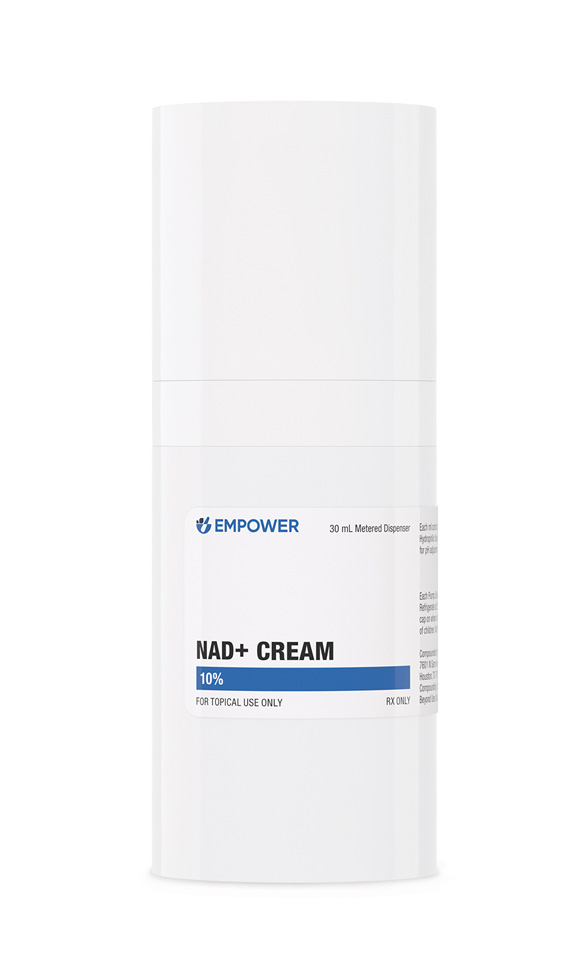
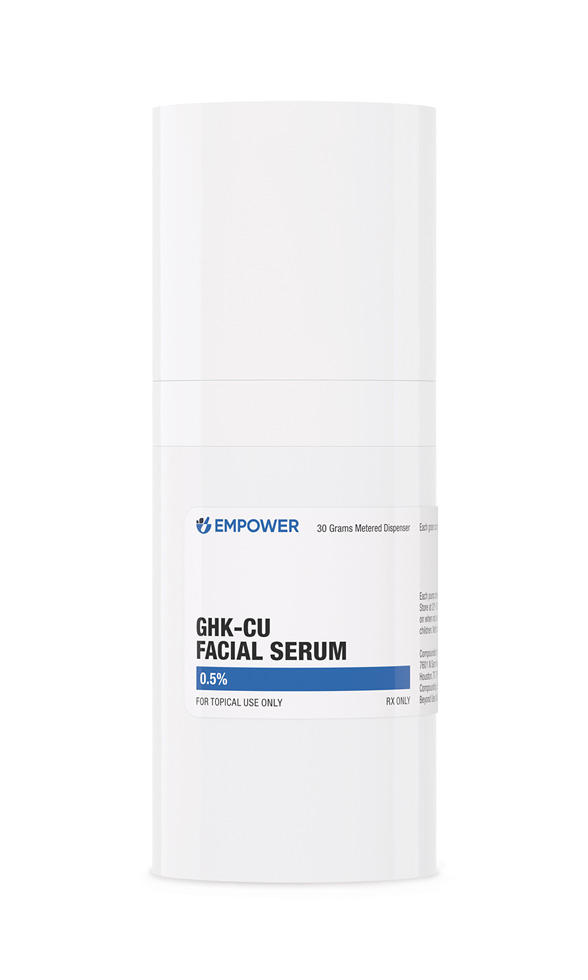 GHK-Cu Facial Serum
GHK-Cu Facial Serum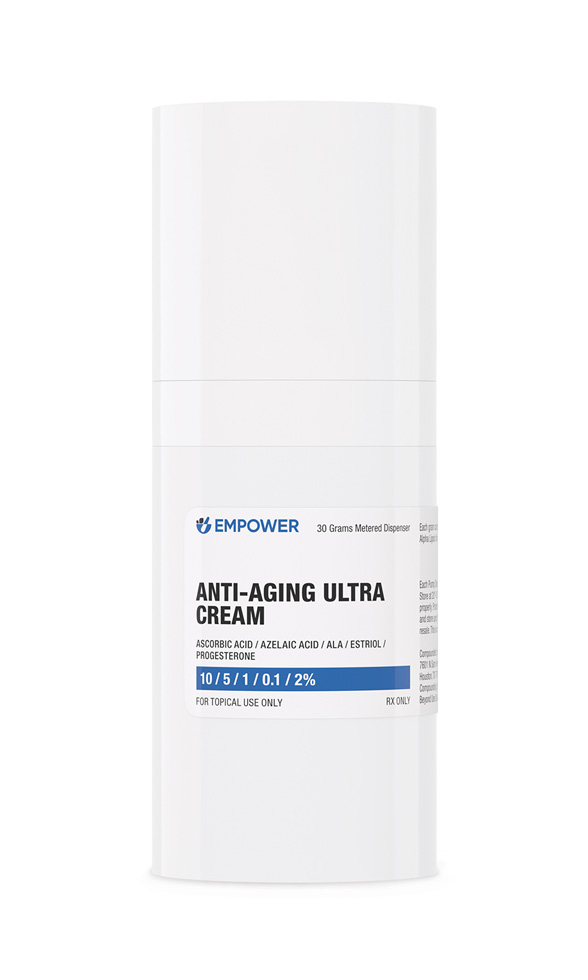 Anti-Aging Ultra Cream
Anti-Aging Ultra Cream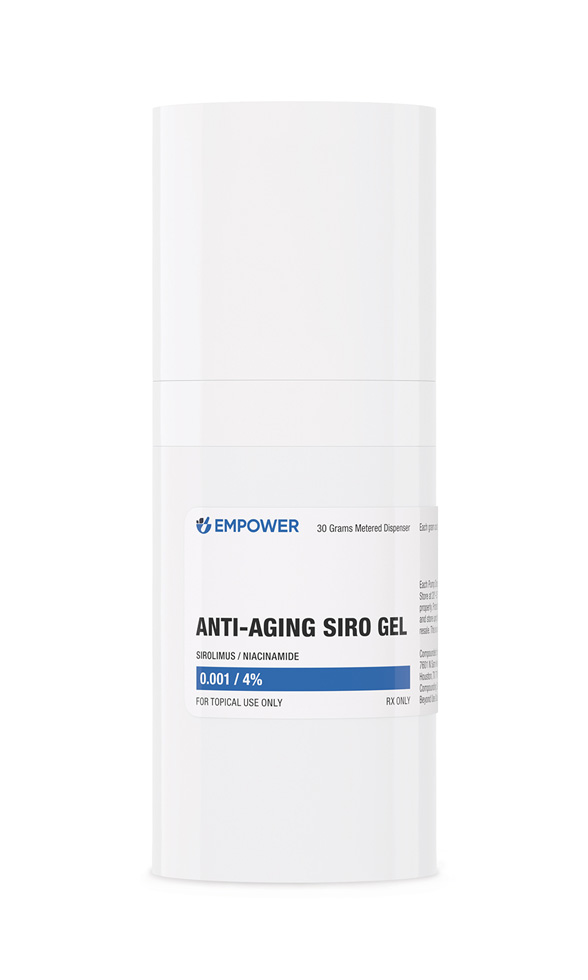 Anti-Aging Siro Gel
Anti-Aging Siro Gel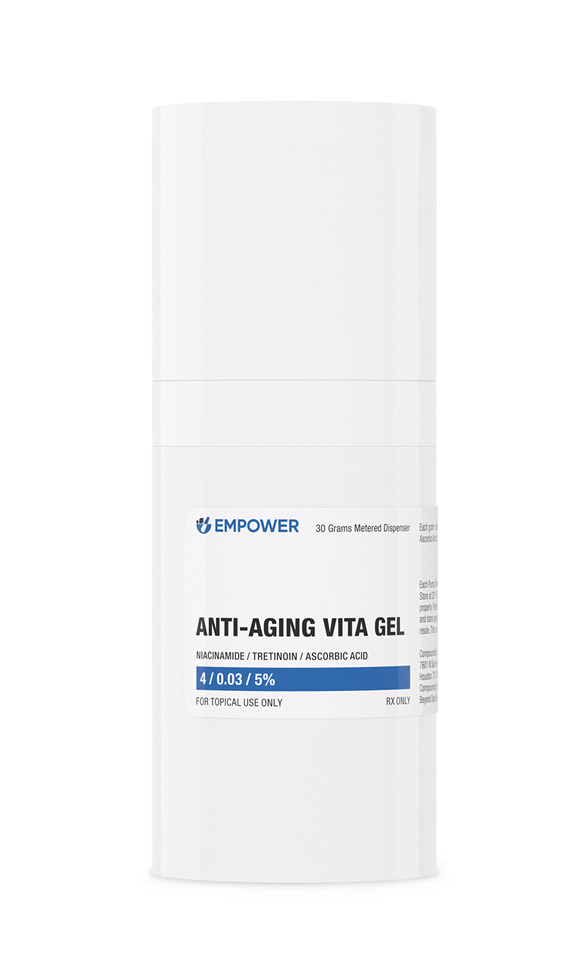 Anti-Aging Vita Gel
Anti-Aging Vita Gel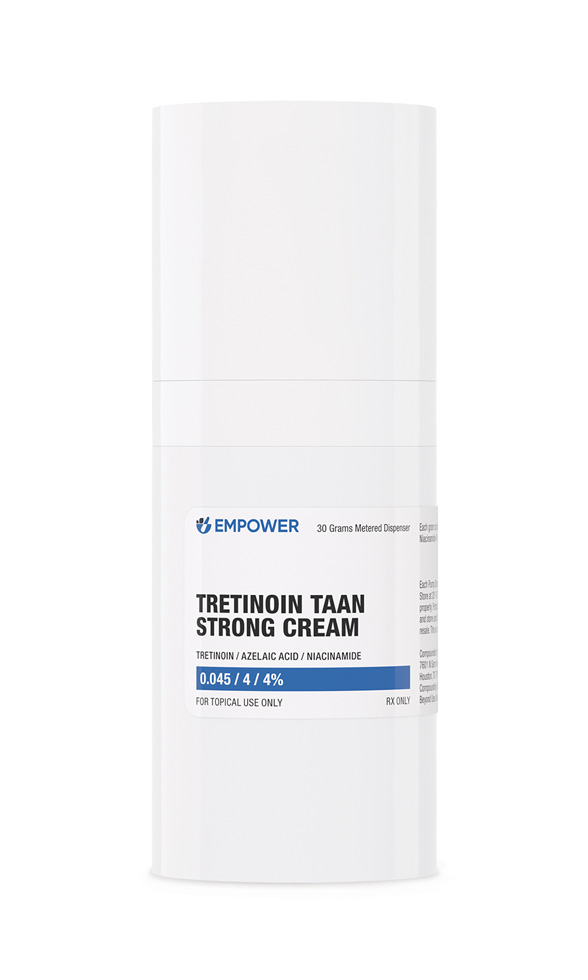 Tretinoin TAAN Cream
Tretinoin TAAN Cream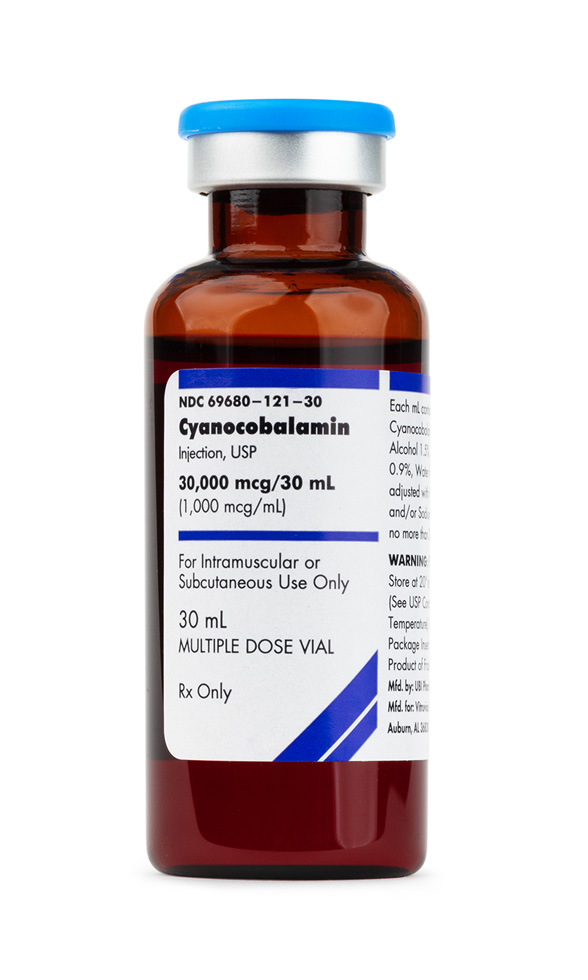 Cyanocobalamin (Vitamin B12) Injection
Cyanocobalamin (Vitamin B12) Injection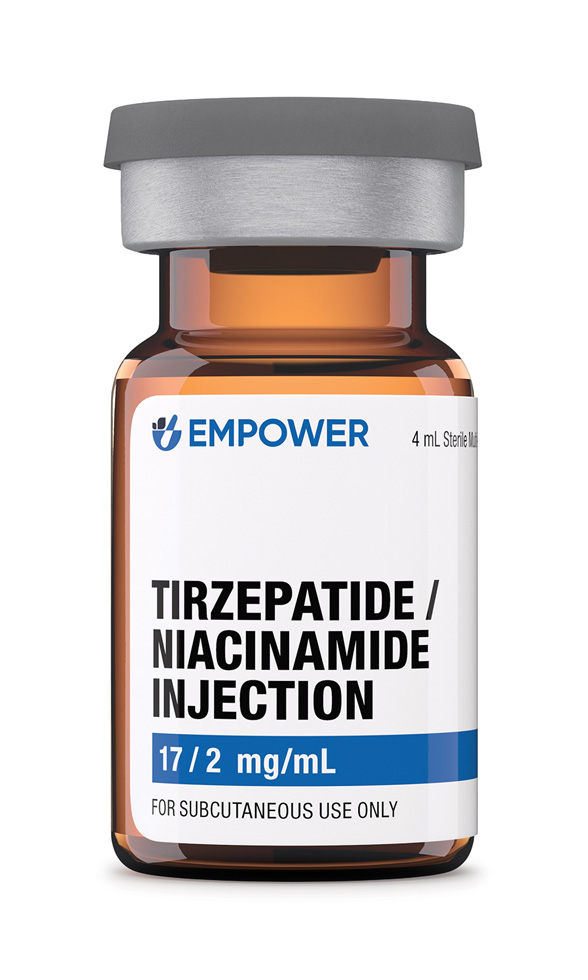 Tirzepatide / Niacinamide Injection
Tirzepatide / Niacinamide Injection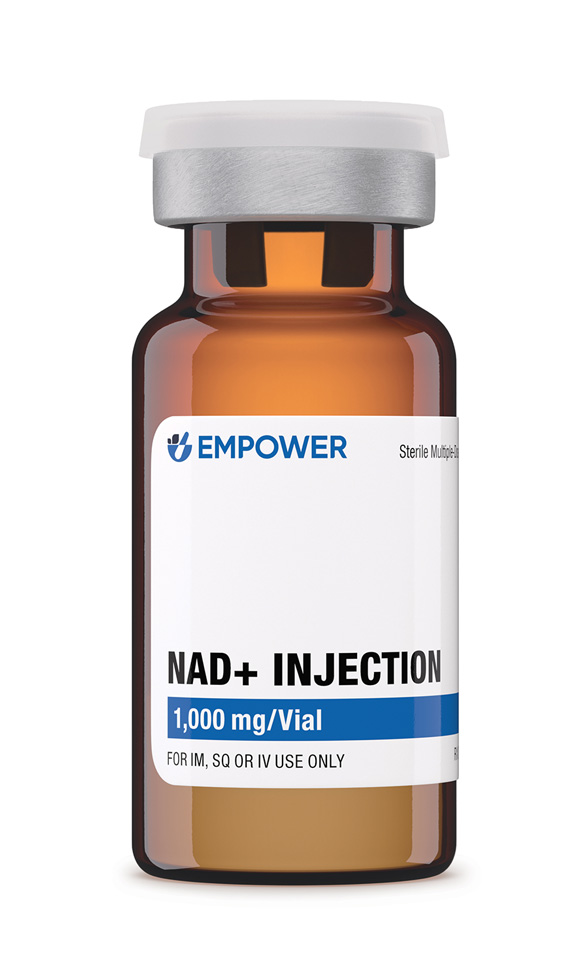 NAD+ Injection (Lyo)
NAD+ Injection (Lyo)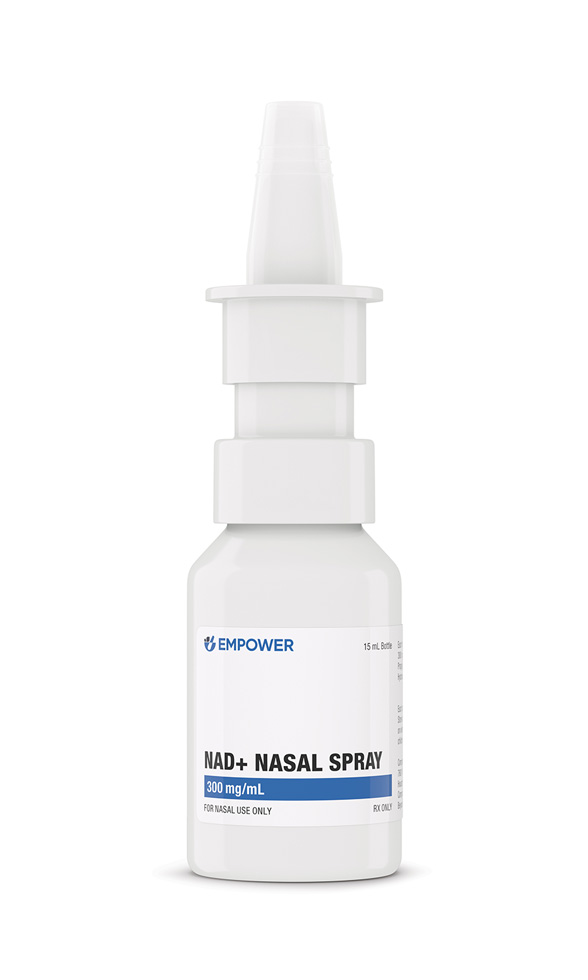 NAD+ Nasal Spray
NAD+ Nasal Spray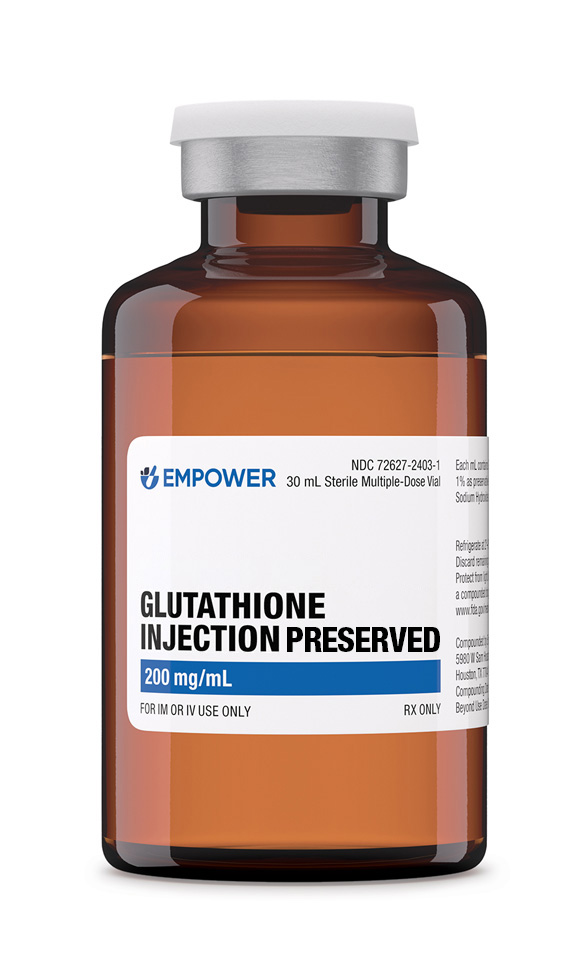 Glutathione Injection
Glutathione Injection